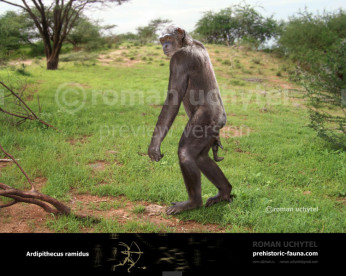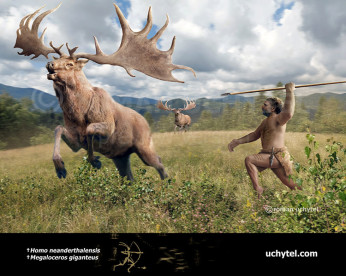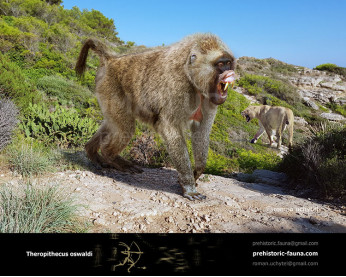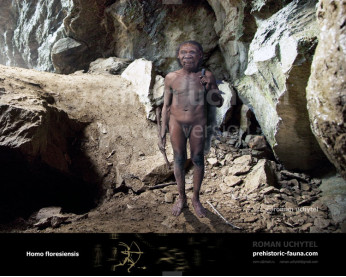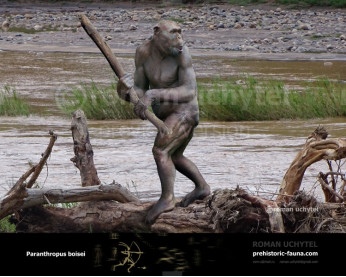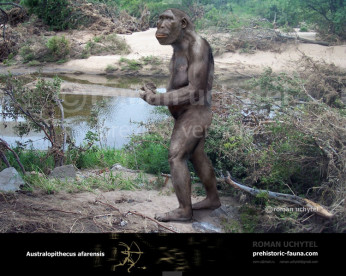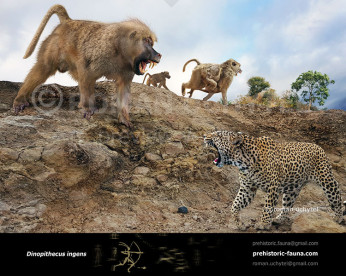Homo ergaster
2029020290Homo ergaster (†Homo ergaster (Groves and Mazák, 1975))
Order: Primates
Family: Hominidae
Dimensions: height - 140-180 сm, weight - 45-65 kg
Temporal range: Early Pleistocene of East and Southern Africa (2.04/1.95–1.4/0.87 million years ago)
Homo ergaster is an extinct species or subspecies of archaic humans who lived in Africa in the Early Pleistocene.The name Homo ergaster roughly translates to "working man", a reference to the more advanced tools used by the species in comparison to those of their ancestors. Though fossils are known from across East and Southern Africa, most H. ergaster fossils have been found along the shores of Lake Turkana in Kenya. There are later African fossils, some younger than 1 million years ago, that indicate long-term anatomical continuity, though it is unclear if they can be formally regarded as H. ergaster specimens. As a chronospecies, H. ergaster may have persisted to as late as 600,000 years ago, when new lineages of Homo arose in Africa.
Earlier Homo probably used counter-attack tactics, like modern primates, to keep predators away. By the time of H. ergaster, this behaviour had probably resulted in the development of true hunter-gatherer behaviour, a first among primates. H. ergaster was an apex predator. Further behaviours that might first have arisen in H. ergaster include male-female divisions of foraging and true monogamous pair bonds. Though undisputed evidence is missing, H. ergaster might also have been the earliest hominin to master control of fire.
Homo ergaster (†Homo ergaster (Groves and Mazák, 1975))
Order: Primates
Family: Hominidae
Dimensions: height - 140-180 сm, weight - 45-65 kg
Temporal range: Early Pleistocene of East and Southern Africa (2.04/1.95–1.4/0.87 million years ago)
Homo ergaster is an extinct species or subspecies of archaic humans who lived in Africa in the Early Pleistocene.The name Homo ergaster roughly translates to "working man", a reference to the more advanced tools used by the species in comparison to those of their ancestors. Though fossils are known from across East and Southern Africa, most H. ergaster fossils have been found along the shores of Lake Turkana in Kenya. There are later African fossils, some younger than 1 million years ago, that indicate long-term anatomical continuity, though it is unclear if they can be formally regarded as H. ergaster specimens. As a chronospecies, H. ergaster may have persisted to as late as 600,000 years ago, when new lineages of Homo arose in Africa.
Earlier Homo probably used counter-attack tactics, like modern primates, to keep predators away. By the time of H. ergaster, this behaviour had probably resulted in the development of true hunter-gatherer behaviour, a first among primates. H. ergaster was an apex predator. Further behaviours that might first have arisen in H. ergaster include male-female divisions of foraging and true monogamous pair bonds. Though undisputed evidence is missing, H. ergaster might also have been the earliest hominin to master control of fire.

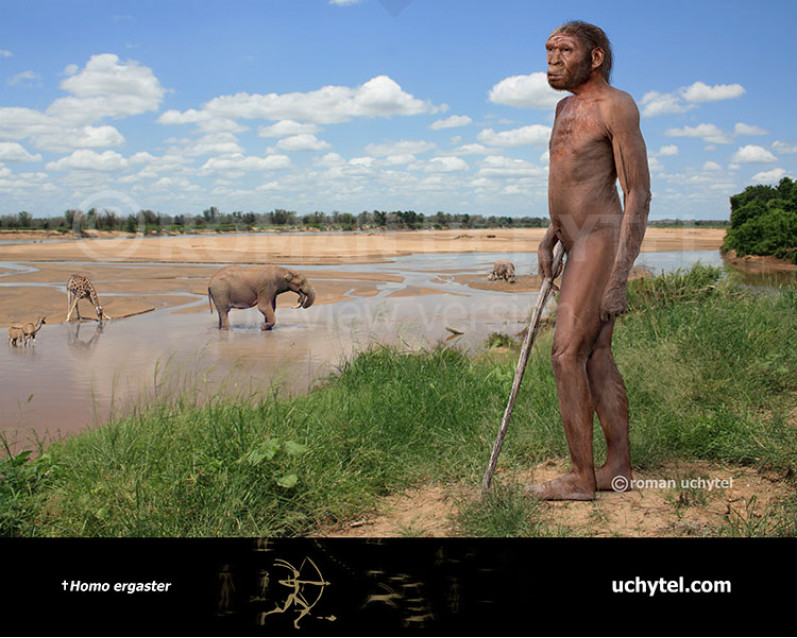
-797x638.jpg)

-70x56.jpg)
-346x277.jpg)
